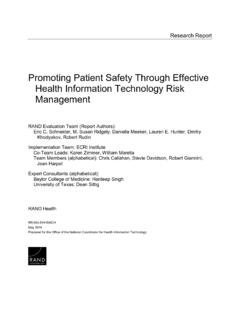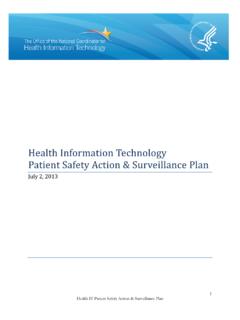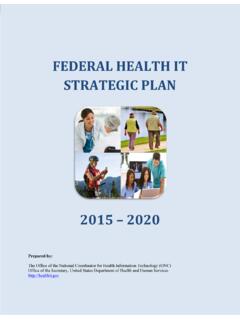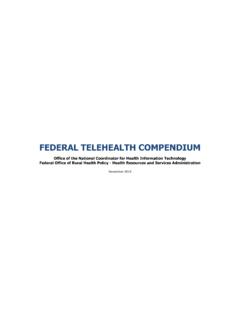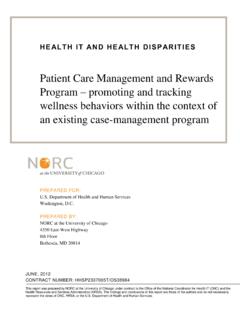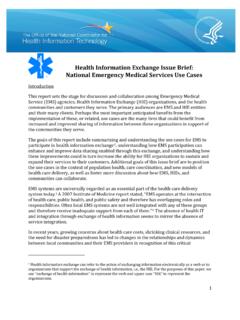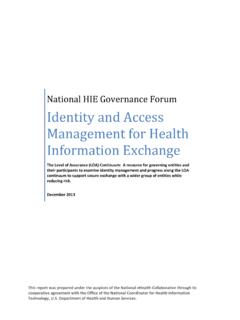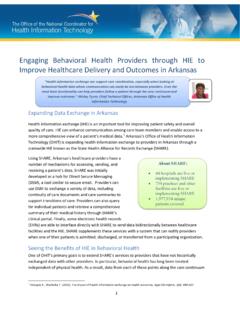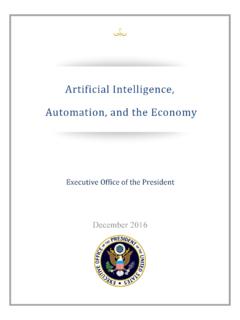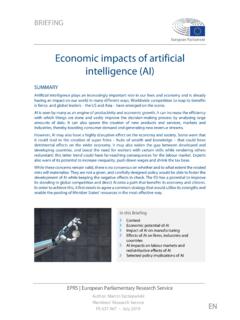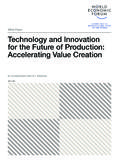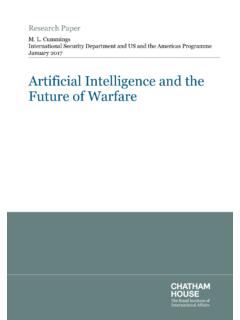Transcription of Artificial Intelligence for Health and Health Care
1 Artificial Intelligence for Health and Health Care Contact: Dolores Derrington December 2017 JSR-17-Task-002 Approved for publication release distribution unlimited. JASON The MITRE Corporation 7515 Colshire Drive McLean, VA 22102-7508 (703) 983-6997 1 iii Contents EXECUTIVE SUMMARY 1 Why Now? ..8 JASON Study Charge and Process ..9 2 AI IN Health DIAGNOSTICS: OPPORTUNITIES AND ISSUES FOR CLINICAL PRACTICE 11 Advance in AI Applications for Medical Imaging ..11 Detection of diabetic retinopathy in retinal fundus images .. 11 Dermatological classification of skin cancer ..13 Data issues ..14 Moving Computational Advances into Clinical Practice ..15 Coronary artery disease issues driving interest in improved methods.
2 15 Development of new approaches non-invasive diagnostics ..15 Development and validation for clinical applications ..16 Summary points for developing clinical applications ..18 Evolution of Standards for AI in Medical Applications ..18 3 PROLIFERATIONS OF DEVICES AND APPS FOR DATA COLLECTION AND ANALYSIS 21 Personal Networked Devices and Apps ..21 Capturing mobile device information utility and privacy ..23 Online plus AI ..23 Examples of privacy and transparency ..24 Concerns about Snake Oil ..25 Concerns about Inequity ..26 4 ADVANCING AI ALGORITHM DEVELOPMENT 29 Crowdsourcing ..29 Crowdsourcing competitions ..30 Citizen science ..31 Deep Learning with Unlabeled Data ..32 iv 5 LARGE SCALE Health DATA 35 Current Efforts All of Us Research Program.
3 36 Environment Data The Missing Data Stream ..40 Capturing data on toxin exposure .. 40 Environmental sensing at different geographic resolutions ..41 6 ISSUES FOR SUCCESS 43 Plans for use of Legacy Health Records ..43 Evaluation ..47 7 FINDINGS AND RECOMMENDATIONS 49 8 EPILOGUE 53 APPENDIX: Statement of Work 55 REFERENCES 57 1 EXECUTIVE SUMMARY This study centers on how computer-based decision procedures, under the broad umbrella of Artificial Intelligence (AI), can assist in improving Health and Health care. Although advanced statistics and machine learning provide the foundation for AI, there are currently revolutionary advances underway in the sub-field of neural networks. This has created tremendous excitement in many fields of science, including in medicine and public Health .
4 First demonstrations have already emerged showing that deep neural networks can perform as well as the best human clinicians in well-defined diagnostic tasks. In addition, AI-based tools are already appearing in Health -oriented apps that can be employed on handheld, networked devices such as smart phones. Focus of the Study. Department of Health and Human Services (HHS), with support from the Robert Wood Johnson Foundation, asked JASON to consider how AI will shape the future of public Health , community Health , and Health care delivery. We focused on technical capabilities, limitations, and applications that can be realized within the next ten years. Some questions raised by this study are: Is the recent level of interest in AI just another period of hype within the cycles of excitement that have arisen around AI?
5 Or would different circumstances this time make people more receptive to embracing the promise of AI applications, particularly related to Health ? AI is primarily exciting to computational sciences researchers throughout academia and industry. Perhaps, the previous advances in AI had no obvious influence on the lives of individuals. The potential influence of AI for Health , including Health care delivery, may be affected by current societal factors that may make the fate of AI hype different this time. Currently, there is great frustration with the cost and quality of care delivered by the US Health care system. To some degree, this has fundamentally eroded patient confidence, opening people s minds to new paradigms, tools, services. Dovetailing with this, there is an explosion in new personal Health monitoring technology through smart device platforms and internet-based interactions.
6 This seemingly perfect storm leads to an overarching observation, which defines the environment in which AI applications are now being developed and has helped shape this study: Overarching Observation: Unlike previous eras of excitement over AI, the potential of AI applications in Health may make this era different because the confluence of the following three forces has primed our society to embrace new Health centric approaches that may be enabled by advances in AI: 1) frustration with the legacy medical system, 2) ubiquity of networked smart devices in our society, 3) acclimation to convenience and at-home services like those provided through Amazon and others. Findings and Recommendations: Overall, JASON finds that AI is beginning to play a growing role in transformative changes now underway in both Health and Health care, in and out of the clinical setting.
7 At present the extent of the opportunities and limitations is just being explored. However, there are significant 2 challenges in this field that include: the acceptance of AI applications in clinical practice, initially to support diagnostics; the ability to leverage the confluence of personal networked devices and AI tools; the availability of quality training data from which to build and maintain AI applications in Health ; executing large-scale data collection to include missing data streams; in building on the success in other domains, creating relevant AI competitions; and understanding the limitations of AI methods in Health and Health care applications. Here we provide the JASON findings and recommendations. Discussion and elaboration on each of these is presented in the text. 1. AI Applications in Clinical Practice Findings: The process of developing a new technique as an established standard of care uses the robust practice of peer-reviewed R&D, and can provide safeguards against the deceptive or poorly-validated use of AI algorithms.
8 (Section ) The use of AI diagnostics as replacements for established steps in medical standards of care will require far more validation than the use of such diagnostics to provide supporting information that aids in decisions. (Section ) Recommendations: Support work to prepare AI results for the rigorous approval procedures needed for acceptance for clinical practice. Create testing and validation approaches for AI algorithms to evaluate performance of the algorithms under conditions that differ from the training set. (Section ) 2. Confluence of AI and Smart Devices for Monitoring Health and Disease Findings: Revolutionary changes in Health and Health care are already beginning in the use of smart devices to monitor individual Health . Many of these developments are taking place outside of traditional diagnostic and clinical settings.
9 (Section ) In the future, AI and smart devices will become increasingly interdependent, including in Health -related fields. On one hand, AI will be used to power many Health -related mobile monitoring devices and apps. On the other hand, mobile devices will create massive datasets that, in theory, could open new possibilities in the development of AI-based Health and Health care tools. (Section ) Recommendations: Support the development of AI applications that can enhance the performance of new mobile monitoring devices and apps. (Section ) Develop data infrastructure to capture and integrate data generated from smart devices to support AI applications. (Section ) Require that development include approaches to insure privacy and transparency of data use. (Section ) Track developments in foreign Health care systems, looking for useful technologies and also technology failures.
10 (Section ) 3 3. Create Comprehensive Training Databases of Health Data for AI Tool Development Findings: The availability of and access to high quality data are critical in the development and ultimate implementation of AI applications in Health care. (Section 4) AI algorithms based on high quality training sets have already demonstrated performance for medical image analysis at the level of the medical capability that is captured in their training data. (Section ) AI algorithms cannot be expected to perform at a higher level than their training data, but should deliver the same standard of performance consistently for data within the training space. (Section ) Laudable goals for AI tools include accelerating the discovery of novel disease correlations and helping match people to the best treatments based on their specific Health , life-experiences, and genetic profile.
